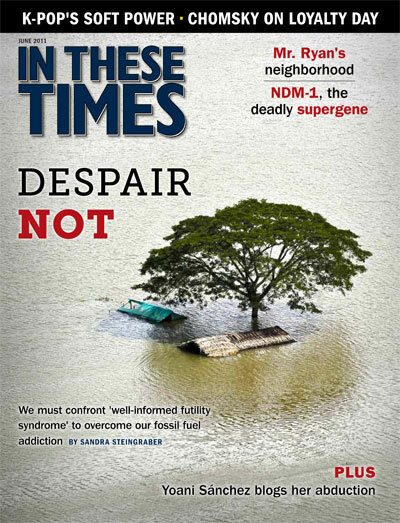If compassion isn’t reason enough for global policymakers to fund safe drinking water, sanitary conditions and decent healthcare in the developing world, perhaps self-interest will be.
A deadly supergene, New Delhi Metallo-beta-lactamase-1 (NDM-1), has emerged. It produces an enzyme that helps bacteria withstand even the most powerful of antibiotics. The World Health Organization (WHO) is warning of “a doomsday scenario of a world without antibiotics,” in which antibiotic resistance will turn common infections into incurable killers and make routine surgeries a high-risk gamble.
“The speed of transfer [is] unparalleled,” Mark Toleman, co-author of a Lancet Infectious Diseases article, told Deutsche Welle, referring to the gene’s ability to pass between different bacteria. It has already spread to 16 countries, affecting 14 different species of bacteria, including those that cause pneumonia, cholera and dysentery, making them potentially untreatable. Only two antibiotics are somewhat effective, and both are toxic and expensive.
Researchers in Sweden traced the gene to New Delhi in 2008 after a man returning from India was felled by a resistant infection. They found that NDM-1 had contaminated 4 percent of the Indian capital’s drinking water samples and 30 percent of drain samples.
The U.S. Institute of Medicine describes this new antibiotic resistance as “a global public health and environmental catastrophe.” Antibiotics have saved millions of lives, making infections – from wounds and childbirth, as well as deadly diseases such as tuberculosis and dysentery – treatable. Their development, along with public sanitation, has done more to extend human longevity than all of modern medicine’s more sophisticated interventions.
But now, owing to promiscuous overuse (among other factors), the world’s antibiotic arsenal is deteriorating, with one and then another becoming less and less effective. Drug companies’ preference for meds that treat for a lifetime rather than cure quickly means that few replacement drugs are in the pipeline. AstraZeneca CEO David Brennan told the Wall Street Journal there was no financial incentive to develop drugs to treat resistant infections.
In New Delhi alone, the Lancet authors estimate that half a million residents carry NDM-1, which is harmless until carriers are made vulnerable by illness, injury or old age. With 1 million deaths from infectious diseases in India every year, there is already a lot of vulnerability to go around.
Nonetheless, many Indian officials are in a snit over the Lancet article and the fact that the gene bears New Delhi’s name. One Home Ministry official accused the authors of “stealing” water samples; others charge that linking the gene to India is a plot to undermine India’s lucrative medical tourism industry.
The scientists defend their including the place of discovery in the name, not just as scientific convention, but because India bears responsibility. Its failure to provide basic public health and its unregulated use of antibiotics has promoted the supergene’s emergence and rapid proliferation. Almost half the country – some 650 million people – lack treated drinking water and modern toilets, according to a recent UN report.
As elsewhere in the world, Indians can buy antibiotics over-the-counter. While dangerous to public health, this policy is not totally irrational when geography or cost make life-saving, prescription-only drugs unattainable. The solution, however, is not unregulated dispensing, but rather available and affordable healthcare.
But involving doctors is no panacea. China’s attempts to thwart overprescription are hindered because “hospitals rely on drug sales for revenue,” health ministry official Zhao Minggang told the China Daily. In the United States, the Centers for Disease Control and Prevention estimates that patients are charged billions for antibiotics that are not just unnecessary, but dangerous. (And we haven’t even touched on the problem of promoting resistance through widespread, routine dosing of livestock with antibiotics to increase growth and allow survival in filthy and crowded conditions.)
“There are now superbugs that do not respond to any drug,” warned WHO’s Zsuzsanna Jakab. “Until all countries tackle this, no country alone can be safe.”

I hope you found this article important. Before you leave, I want to ask you to consider supporting our work with a donation. In These Times needs readers like you to help sustain our mission. We don’t depend on—or want—corporate advertising or deep-pocketed billionaires to fund our journalism. We’re supported by you, the reader, so we can focus on covering the issues that matter most to the progressive movement without fear or compromise.
Our work isn’t hidden behind a paywall because of people like you who support our journalism. We want to keep it that way. If you value the work we do and the movements we cover, please consider donating to In These Times.








